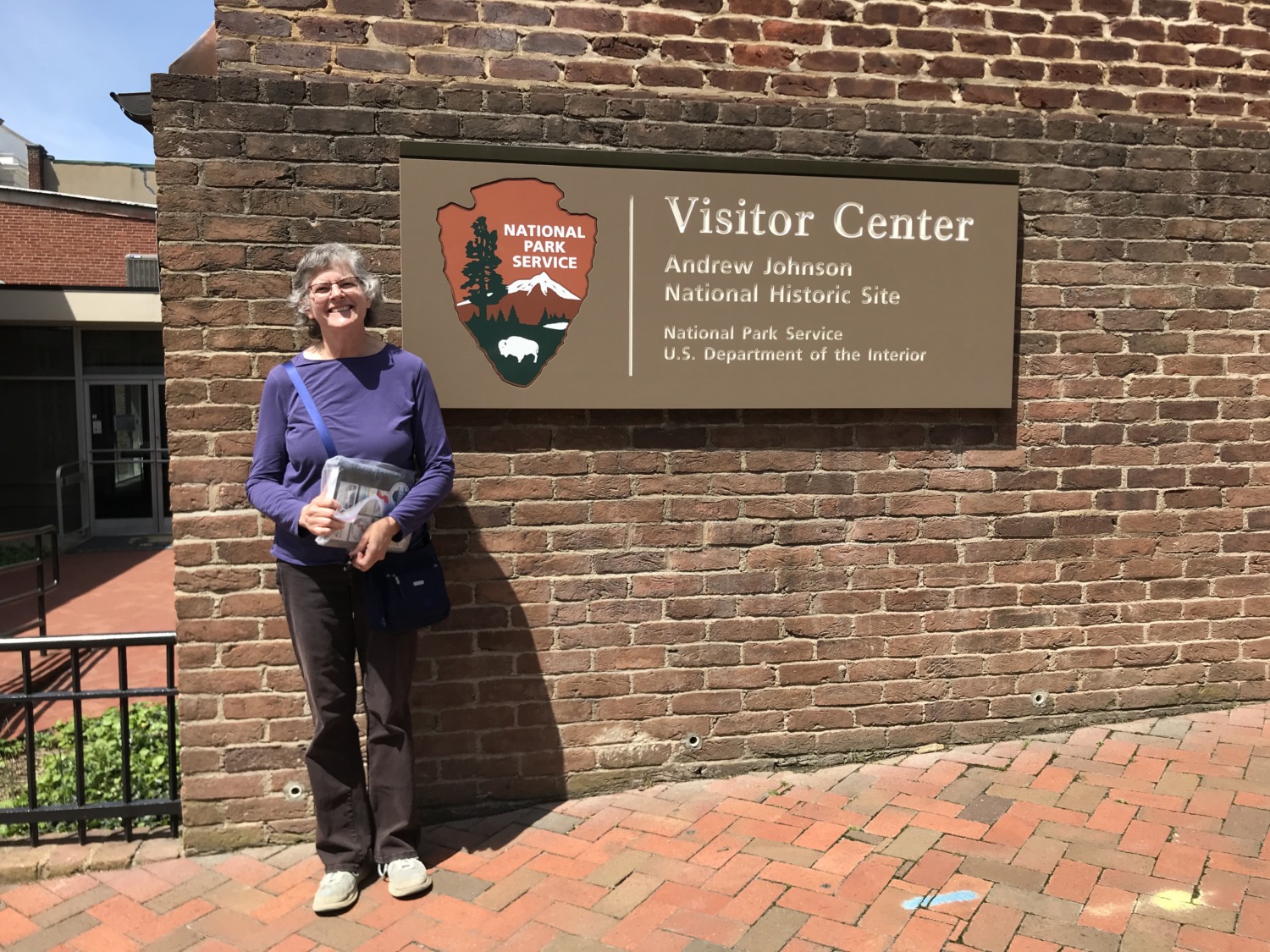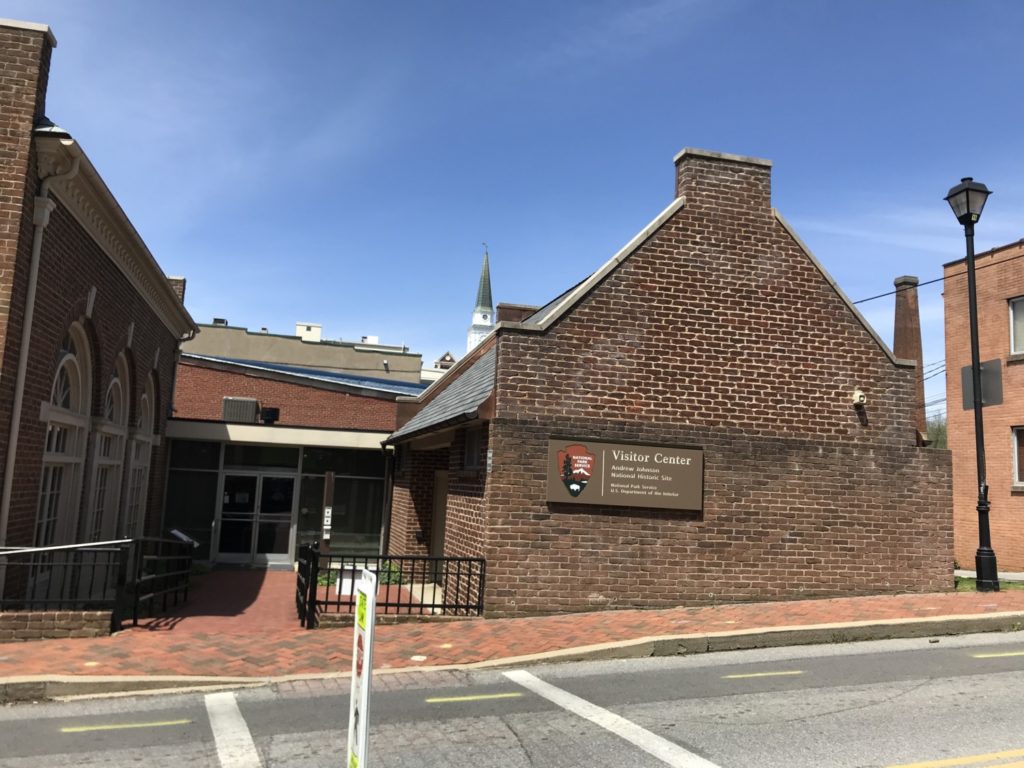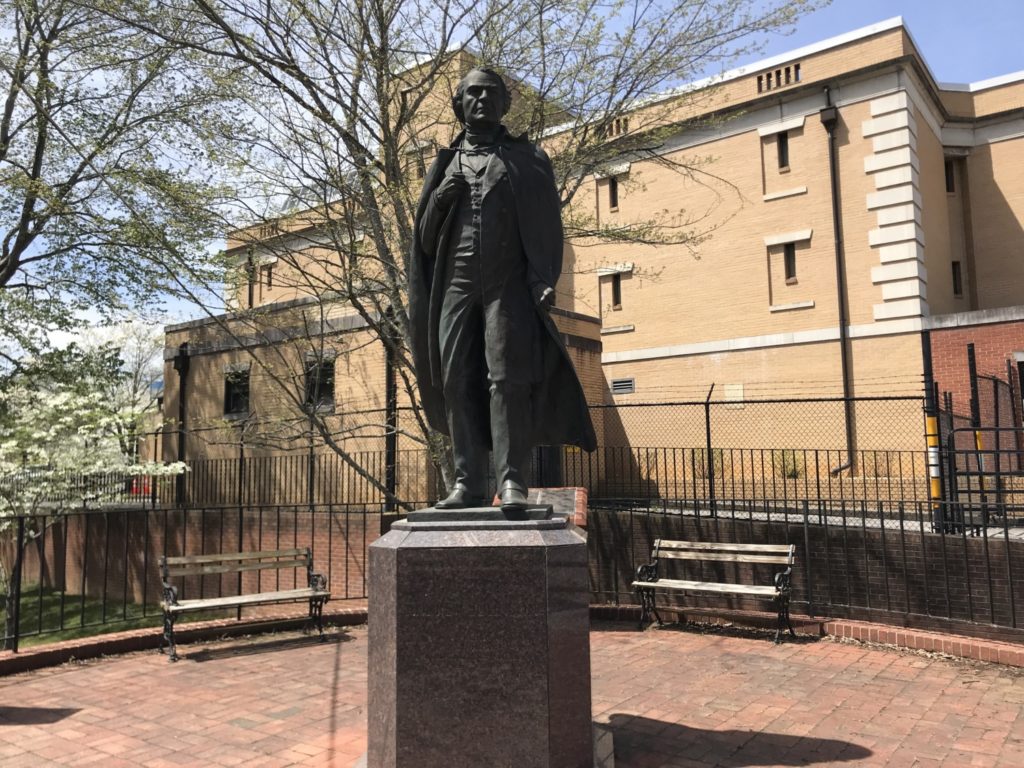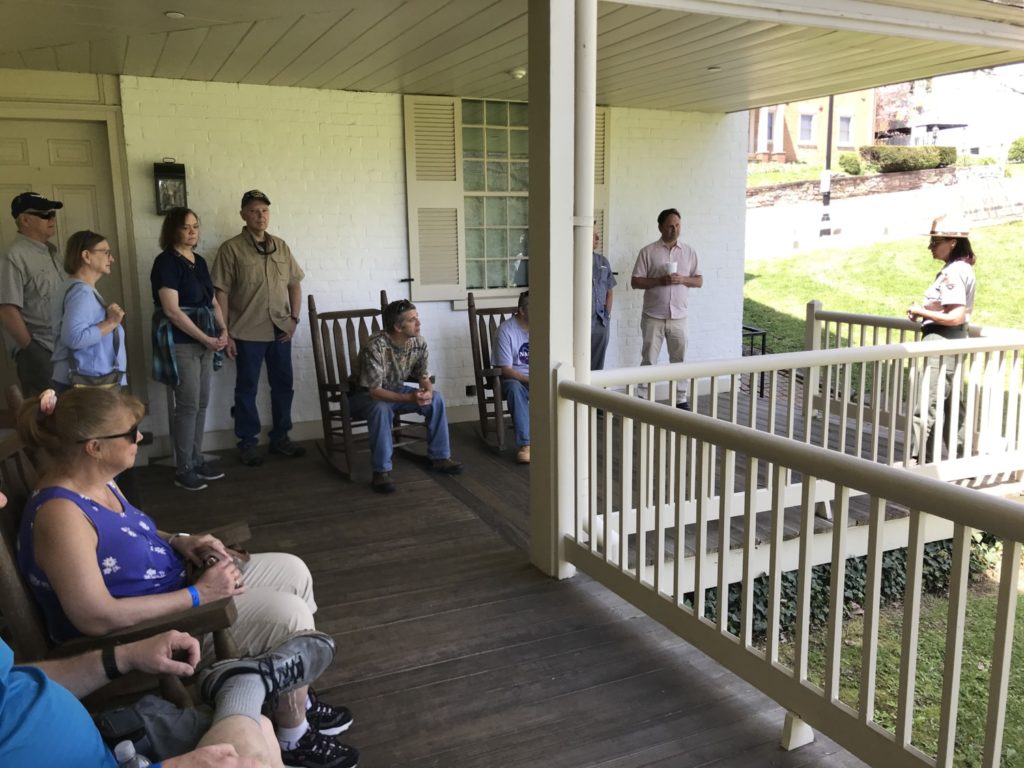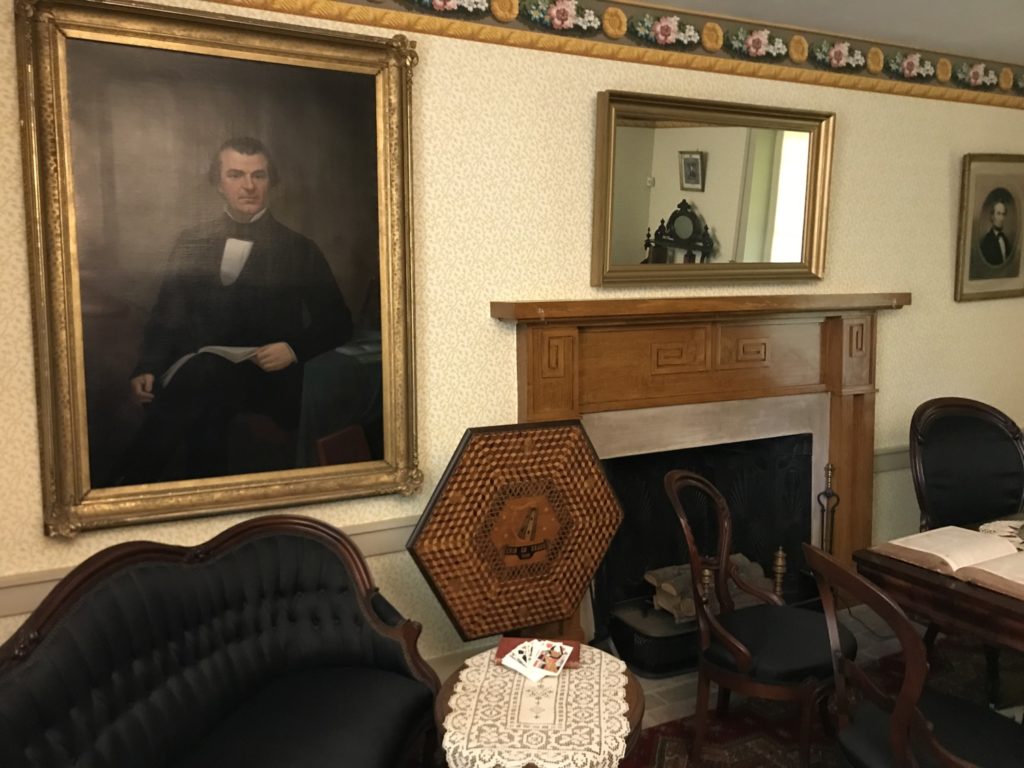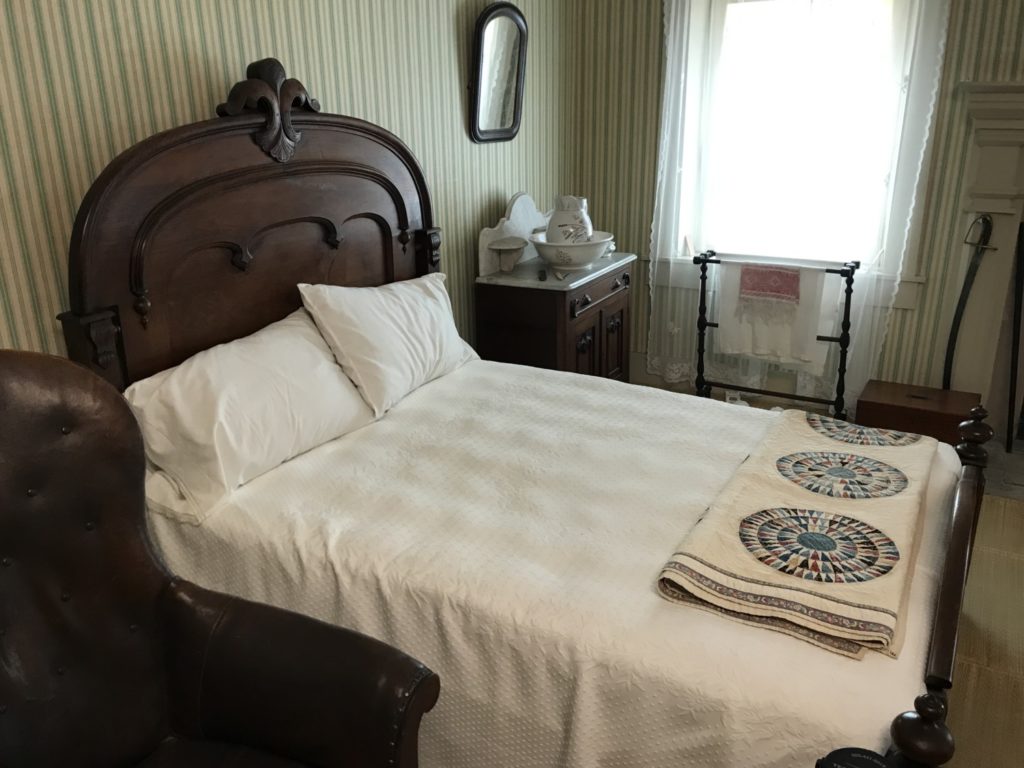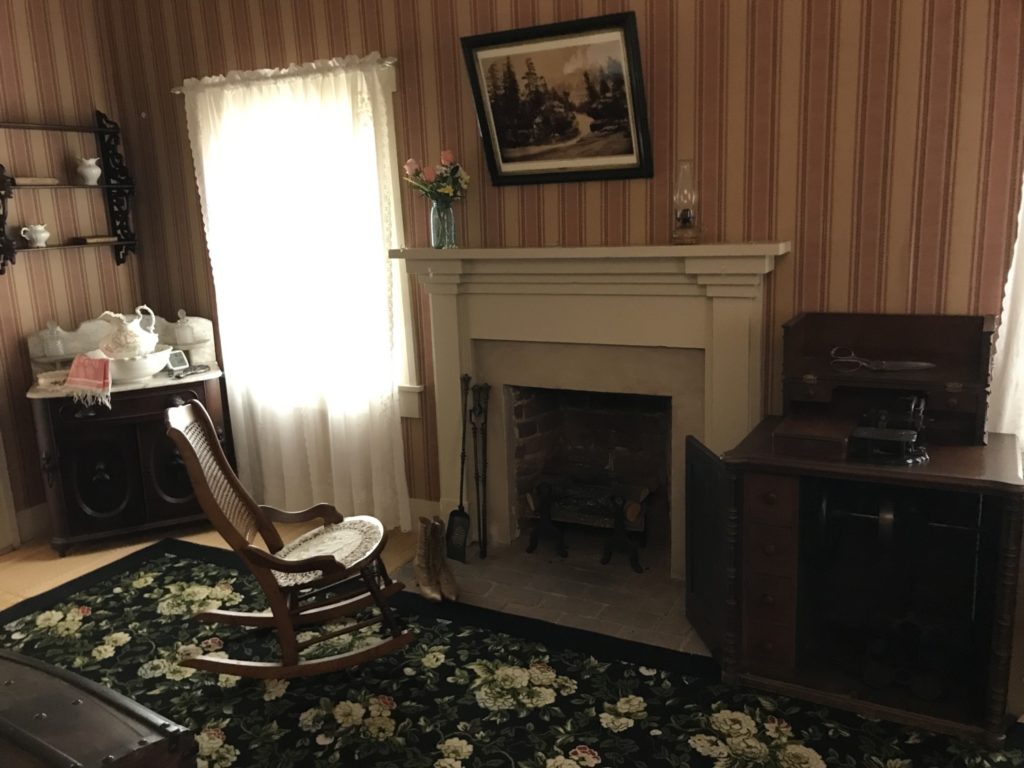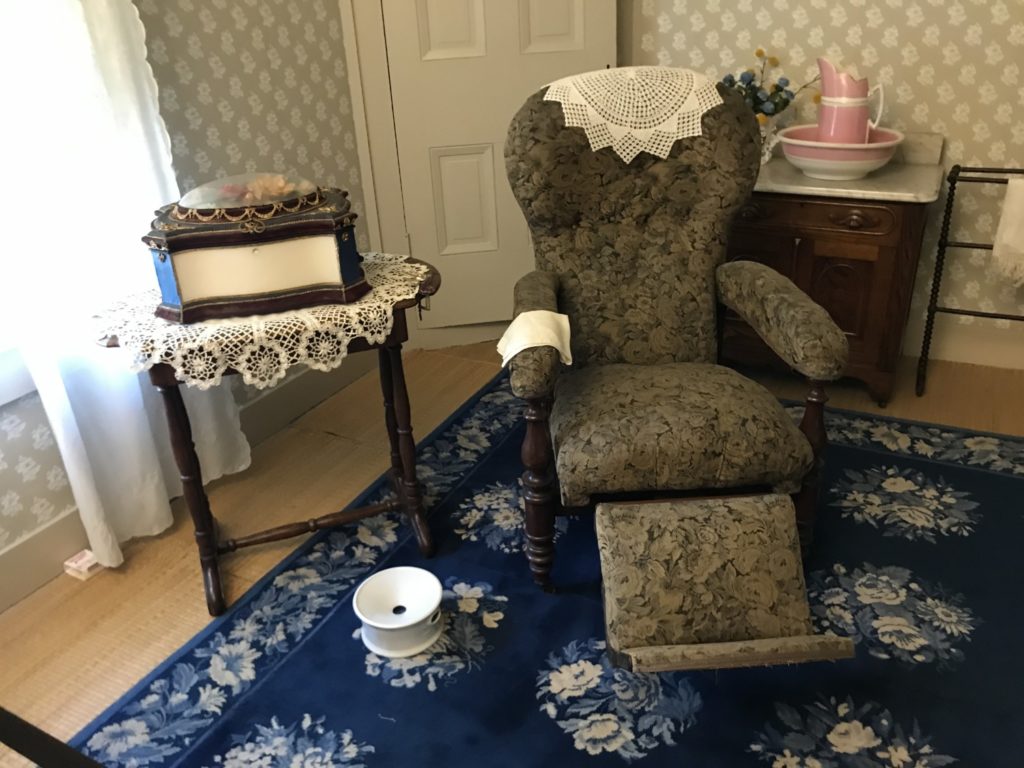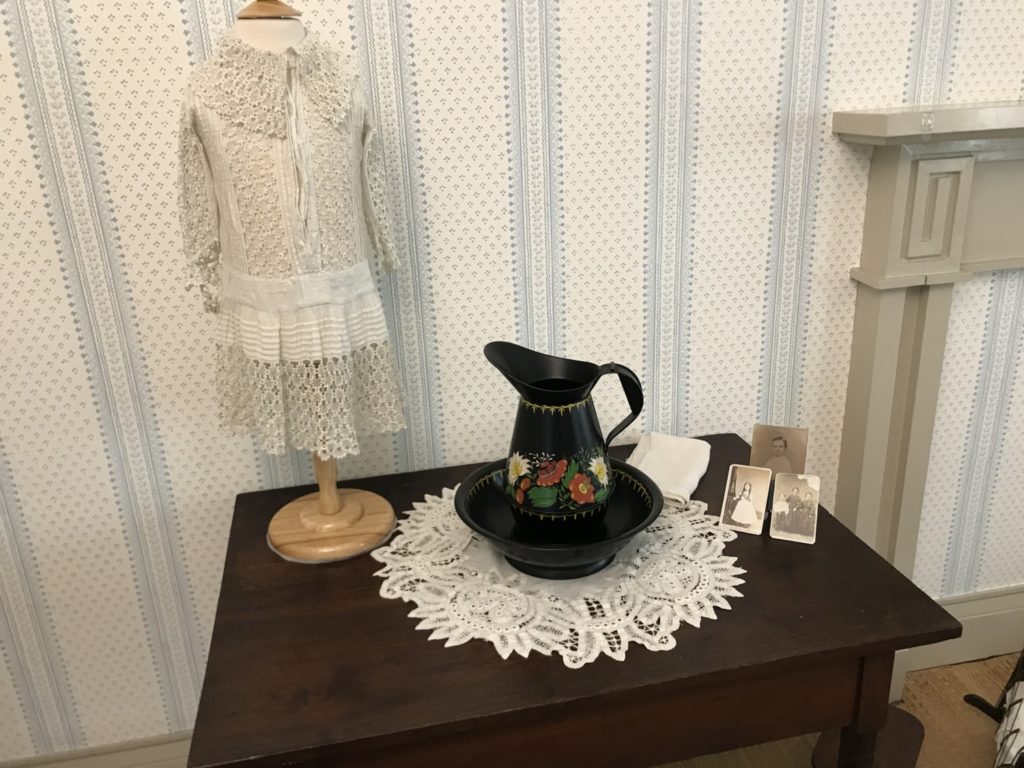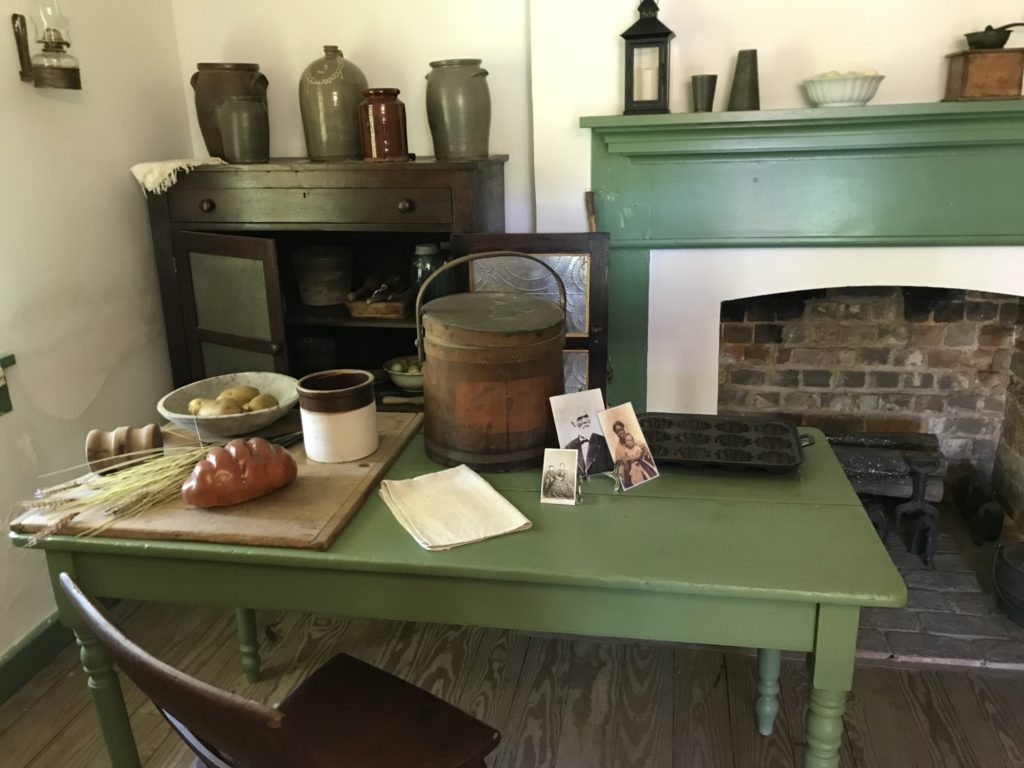Tom and I are back in Ohio now, but on the way we took a detour to see the National Park sites in eastern Tennessee and Kentucky. One of the places we visited was the Andrew Johnson National Historic Site. Tom and I always have mixed feelings about visiting presidential sites because they seem so limited. But we always learn a lot and come away with a new appreciation for the difficulty of being the president of the United States. Andrew Johnson National Historic Site was no different.
Andrew Johnson National Historic Site is located in the small city of Greeneville, Tennessee. Johnson was born in Raleigh, North Carolina, in 1808, to a poor family. His father died when Johnson was only three years old and his mother washed laundry to support herself and her two sons. Johnson never attended school and was apprenticed to a tailor when he was 10. He was supposed to serve as an apprentice until he was 21, but he ran away when he was 15. Johnson settled in Greeneville, Tennessee, and brought his family there to live with him. He married when he was 18 and his wife became his tutor. Johnson became an avid reader and a great public speaker. He learned how to debate by standing up for his views in his tailor shop.

Andrew Johnson started his political rise in 1829 when he was elected town alderman. Over the next few years he was elected mayor of Greeneville, then state representative and state senator. He was elected to the US House of Representatives in 1843 and then Governor of Tennessee in 1853. He was an ardent believer in states’ rights, but he believed strongly in the Constitution and urged his fellow southerners to stay in the Union. Johnson was elected a US Senator in 1857.
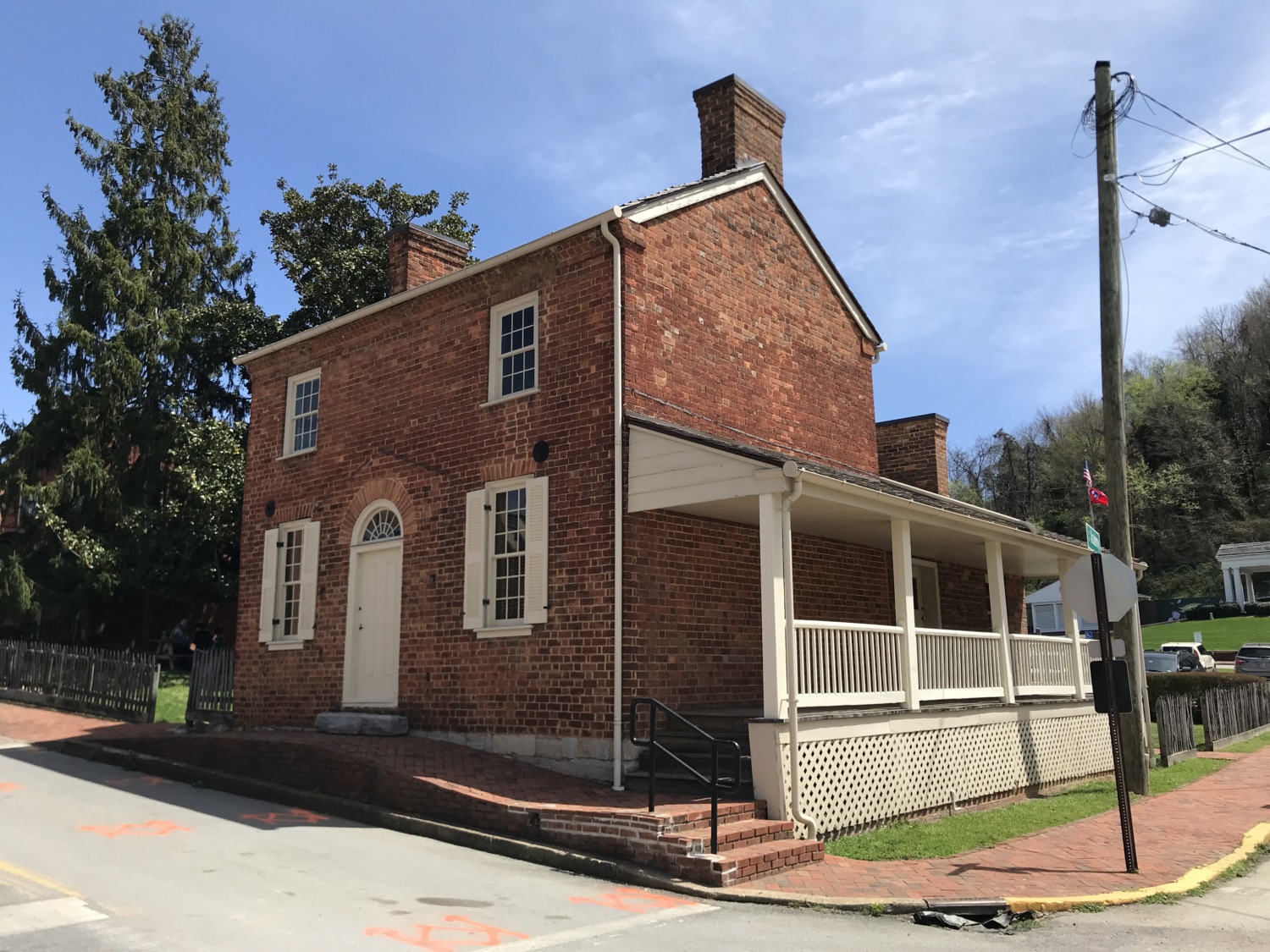
When Tennessee seceded from the Union in 1861, Johnson was the only Senator from a seceded state to stay in Washington. When the Union gained control of Tennessee in 1862, Johnson was appointed by Lincoln to serve as military governor. He voluntarily freed his 14 slaves in 1863 and began paying those who stayed in his service. When Lincoln ran for re-election in 1864, he chose Johnson as his running mate.
Abraham Lincoln was assassinated and died on April 15, 1865. Johnson took the presidential oath of office that day. Congress did not meet again until December 1865. During that time Johnson set in place Lincoln’s plan of reconstruction for the South. After Congress came back, however, they felt that Johnson was being too soft on the south and passed harsher laws.
When Johnson twice vetoed the 14th Amendment, and Congress twice overrode the veto, the future path of his presidency was set. Seen as a traitor by the southern elite and as a southerner by those in the north, Johnson could not get agreement on anything with Congress. The US House of Representatives passed 11 articles of impeachment in February 1868. After a three-month trial, the Senate finally voted not to impeach, by one vote. Although Johnson sought his party’s nomination to run for President in 1868, it was not obtained. After he left office, Johnson returned to his home in Greeneville. He died, following a stroke, in 1875.
While we were in Greeneville, Tom and I saw the original Johnson Tailor shop in the Visitors Center. We also saw a good movie on his life and spent some time looking at the museum. We walked through the first house Johnson owned in Greeneville. Then we took a Ranger-guided tour of the home where his family lived after he became a successful politician. The home remained in the family until it was given to the park service in 1932. All of the furniture in the house belonged to the Johnson family. Our final stop in Greeneville was the Andrew Johnson National Cemetery. President Johnson, his wife, and most of his children are buried in the family plot at the top of the hill.

Tom and I learned a lot about Andrew Johnson at the historic site. The park service did a great job of interpreting his history, both the good and bad. Like most people, Andrew Johnson was a complex man with strengths and weaknesses. His political career brought out both and the National Park Service explained it in a way I could understand. It was a very interesting stop.

